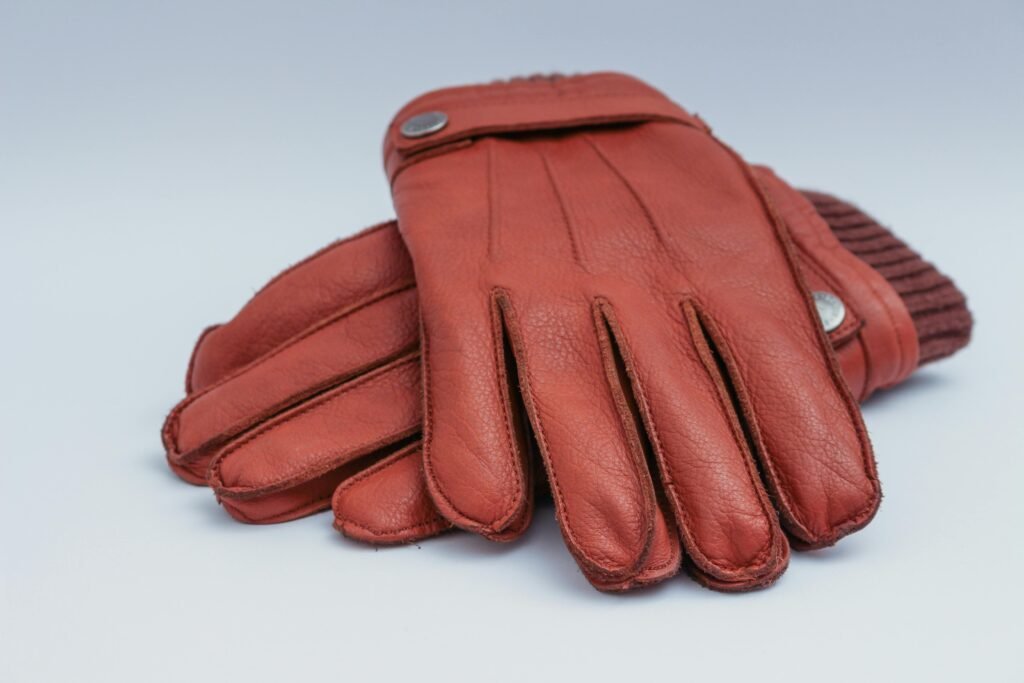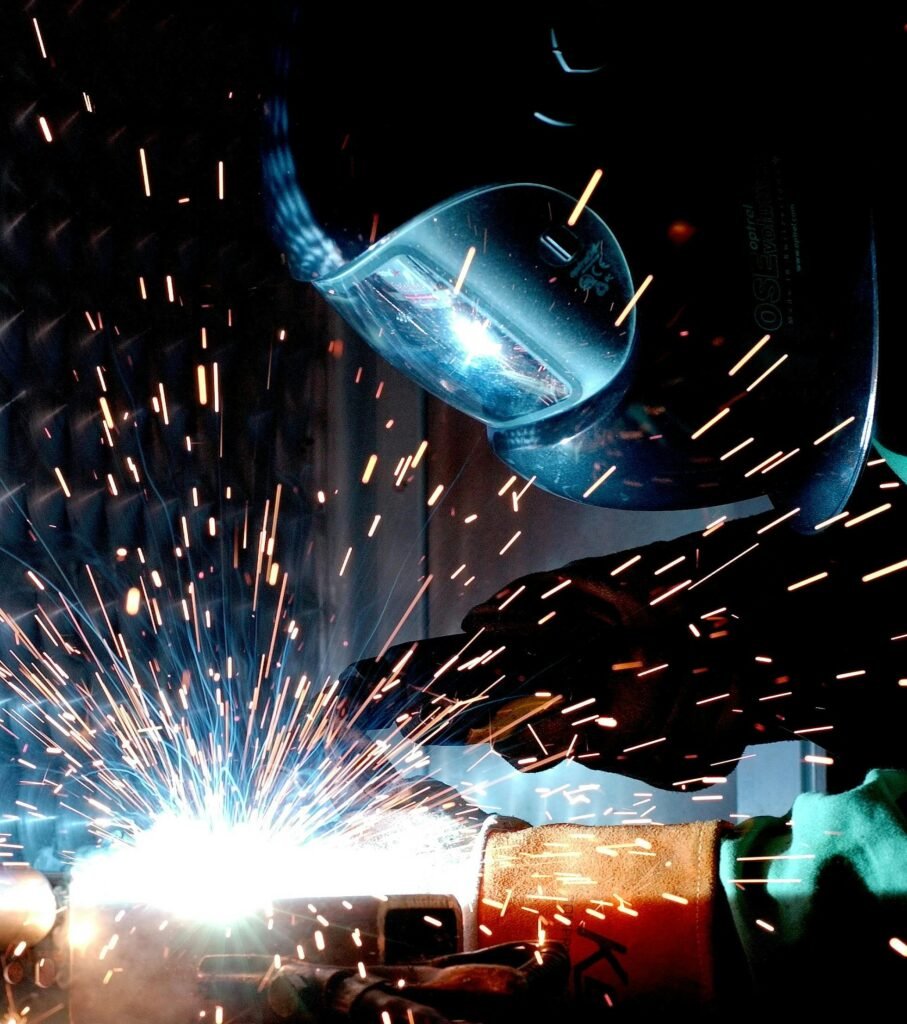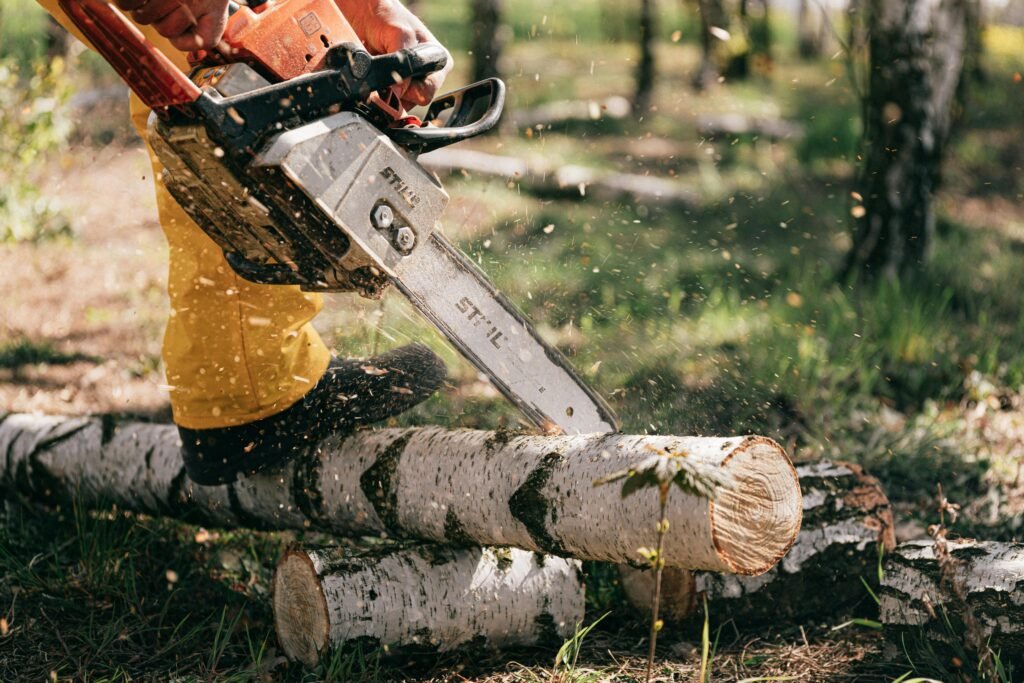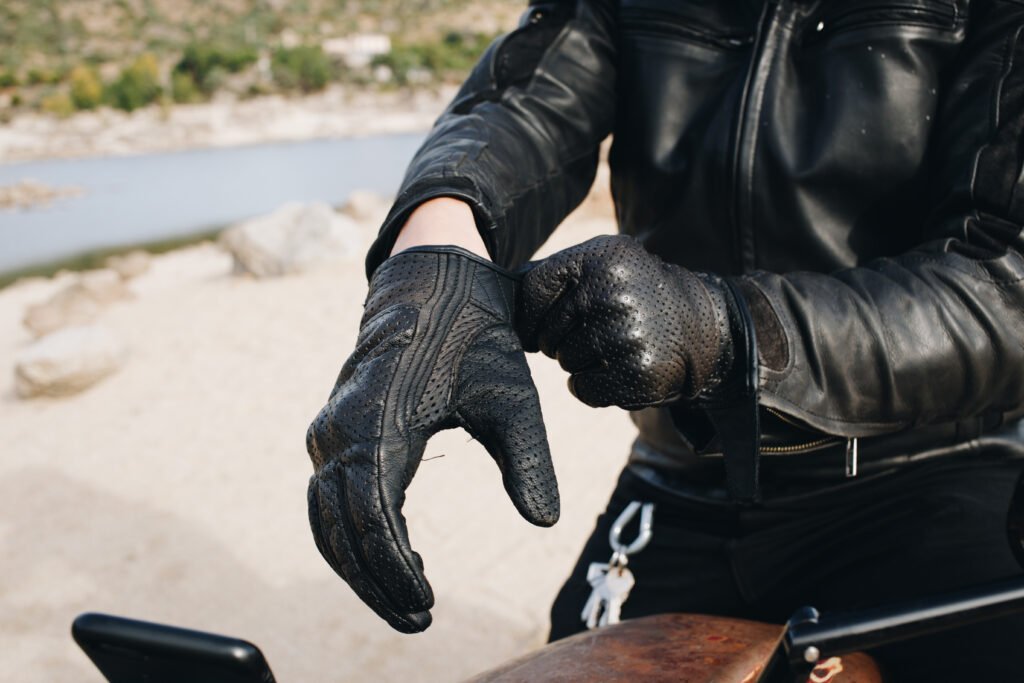Table of Contents
Introduction: Are Leather Work Gloves cut-resistant?
Leather work gloves: a classic symbol of hard work and dedication. But are they enough to shield your precious hands from the dangers lurking in your workshop? When it comes to cut resistance, the answer is a shocking maybe. Buckle up, because we’re about to debunk myths and reveal the hair-raising truth about leather gloves.

The Leather Illusion: Not All Heroes Wear Cowhide
Leather is tough, that much is undeniable. But let’s not forget, it’s literally animal skin! Imagine a sharp blade against a raw steak – not a pretty picture, is it? Standard leather work gloves offer minimal to ZERO cut resistance. They might protect against scrapes and bumps, but a rogue blade? Not so much.
The NoCry® Cavalry: The REAL Cut-Resistant Hero

So, what’s the solution? Enter NoCry®, a magical (well, science-made) material five times stronger than steel! Gloves lined with NoCry® are the true champions of cut resistance. They can deflect blades, shatter glass, and basically turn your hands into invincible shields.
But Wait, There’s More! The Cut-Resistance Spectrum
Not all NoCry® gloves are created equal. There’s a whole rating system, folks! Imagine it like a superhero ranking – the higher the level, the more slash-proof your gloves become. Here’s a sneak peek:
- Level A: Stops minor nicks and cuts (think paper cuts, not machetes)
- Level B: Protects against moderate cuts (think box cutters, not chainsaws)
- Level C: Beefs up defence against serious cuts (think shattered glass, not samurai swords)
- Level D: The ultimate defence – even razors might struggle (but please, don’t test that!)

The Leather vs. NoCry® Showdown: Choosing Your Champion
So, leather or NoCry®? It depends on your battleground! Here’s a fight card to help you decide,-
Leather’s Strengths:-
- Dexterity: Leather is naturally flexible, allowing for better grip and control.
- Breathability: Leather breathes, keeping your hands cool and comfortable.
- Heat Resistance: Leather offers some heat protection, perfect for hot environments.
- Durability: Leather gloves can last a long time with proper care.
NoCry®’s Strengths:-
- Cut Resistance: NoCry® is the undisputed king of cut protection.
- Puncture Resistance: It can also shield your hands from sharp objects like nails.
- Abrasion Resistance: Say goodbye to scrapes and blisters.

The Shocking Truth: When Leather and NoCry® Join Forces
Here’s a plot twist! Some work gloves cleverly combine leather with NoCry® liners. This dream team offers the best of both worlds: the dexterity of leather with the unmatched cut protection of NoCry®.
Beyond the Material: The Ultimate Guide to Cut-Resistant Gloves
Finding the right gloves goes beyond just leather vs. NoCry®. Here are some significant variables to consider:
- Task-Specific Needs: Are you working with sharp objects, rough materials, or heat? Choose gloves designed for your specific job.
- Comfort and Fit: Ill-fitting gloves can be a safety hazard. Guarantee they fit cosily yet consider mastery.
- Maintenance: Regular cleaning and proper storage will extend the life of your gloves.

Don’t Be a Glove-less Gladiator: Invest in Your Safety
Think of your hands as irreplaceable tools. Without them, your work life comes to a screeching halt. Don’t settle for subpar protection. Invest in high-quality, cut-resistant gloves that match your needs. Keep in mind, an ounce of counteraction merits a pound of… all things considered, fastens!
Bonus Round: Unveiling the Hidden Dangers of Worn-Out Gloves
Even the best gloves lose their effectiveness over time. Worn-out leather can become brittle and tear easily. NoCry® liners can weaken with use. Routinely examine your gloves for indications of mileage. When in doubt, replace them!
The Final Verdict: Leather is Great, But NoCry® is King (or Queen) for Cut Resistance
Leather work gloves have their place, but when it comes to cut resistance, NoCry® reigns supreme. Don’t be fooled by the illusion of toughness – prioritize safety and choose gloves that can truly protect your hands. Remember, informed workers are safe workers!

Level Up Your Glove Game: Unveiling Advanced Cut-Resistant Technologies
We’ve established that NoCry® is the MVP of cut resistance. But the world of safety gloves is constantly evolving! Here’s a glimpse into some cutting-edge (pun intended) technologies that are pushing the boundaries of protection:
1. Dyneema® – The Lightweight Champion
Think of Dyneema® as NoCry®’s super-agile cousin. This ultra-high molecular weight polyethene (UHMWPE) fibre boasts an incredible strength-to-weight ratio. It’s significantly lighter than NoCry® while offering comparable cut resistance. This makes Dyneema® gloves ideal for tasks requiring maximum dexterity, like precision assembly or intricate metalwork.
2. Spectra® Shield – When Strength Meets Comfort
Spectra® is another high-performance fibre known for its exceptional cut resistance. But here’s the secret sauce: Spectra® blends seamlessly with other materials like nylon or cotton. This creates gloves that are not only strong but also surprisingly comfortable and breathable. Perfect for all-day wear, especially in hot or humid environments.
3. Hybrid Heroes: Combining Fibers for Ultimate Protection
Remember the dream team of Leather and NoCry®? Well, glove manufacturers are getting even more creative. Now we’re seeing gloves that combine various cut-resistant fibres like NoCry® and Dyneema® or Spectra®. This synergistic approach creates gloves with unparalleled protection against a wider range of hazards.
4. Glass and Metal Fibers – For the Truly Demanding Jobs
For those working in extreme environments, there are gloves made with woven glass or metal fibres. These offer the ultimate level of cut resistance, capable of withstanding even razor blades and broken glass. However, the trade-off is often reduced dexterity and breathability. These gloves are best suited for specific high-risk tasks like metal fabrication or chainsaw operation.

Beyond Cut Resistance: A Look at Additional Glove Features
While cut resistance is a crucial factor, it’s not the only one. Here are some additional features to consider when choosing your gloves:
- Impact Protection: Working with heavy tools or machinery? Look for gloves with padding or reinforced knuckles to absorb impact and prevent injuries.
- Puncture Resistance: Need to handle sharp objects like needles or sheet metal? Opt for gloves with puncture-resistant materials like NoCry® or steel mesh.
- Chemical Resistance: Working with harsh chemicals? Choose gloves made from materials like nitrile or butyl rubber that resist chemical degradation.
- Waterproofing: Need to keep your hands dry in wet environments? Look for gloves with waterproof membranes or coatings.
Remember, the right gloves are an investment in your safety and well-being. Don’t hesitate to consult with a safety professional to determine the best gloves for your specific needs and work environment.

Mythbusters: Debunking Common Glove Misconceptions
Even in the age of information, glove myths persist! Here’s a quick debunking session:
- Myth #1: Thicker leather equals better cut resistance. Not necessarily. Thicker leather might be more puncture-resistant, but it can also be bulkier and hinder dexterity.
- Myth #2: Cut-resistant gloves are uncomfortable. Not all of them! Modern gloves with Dyneema® or Spectra® offer excellent cut resistance while remaining lightweight and breathable.
- Myth #3: Washing ruins cut-resistant gloves. Actually, proper cleaning is essential to maintain the integrity of the fibres. Adhere to the producer’s guidelines for washing and drying your gloves.

The Final Boss: Maintaining Your Cut-Resistant Gloves for Peak Performance
Just like any piece of equipment, your gloves need proper care to last. Here are some tips:
- Inspect regularly: Look for signs of wear and tear like rips, tears, or fraying. Replace damaged gloves immediately.
- Clean properly: Follow the manufacturer’s instructions for washing. Avoid harsh chemicals or abrasive cleaners.
- Store them right: Keep your gloves in a cool, dry place away from direct sunlight.
By following these simple steps, you can ensure your gloves stay in top condition and continue to protect your hands for a long time.
So, ditch the outdated leather-only mentality and embrace the world of advanced cut-resistant gloves! With the right knowledge and a bit of research, you can find the perfect pair to keep your hands safe and your work flowing smoothly. Remember, prevention is key, and your hands are irreplaceable tools. Invest in your safety – it’s the smartest move you can make!

FAQ
1) My old leather gloves seem fine – do I really need new ones?
Ans:- Worn-out gloves lose their effectiveness! Inspect your gloves regularly. NoCry® weakens, and leather becomes brittle. Replace them when they show signs of wear for ultimate protection.
2) My gloves get sweaty – are there breathable cut-resistant options?
Ans:- No more swamp hands! Spectra® gloves blend cut protection with breathability. Perfect for all-day wear, especially in hot environments.
3) My work involves chemicals – can I find cut-resistant gloves for that?
Ans:- Of course! Not all gloves are created equal. Look for gloves with materials like nitrile or butyl rubber that resist chemical degradation.
4) I need dexterity – are there cut-resistant gloves that aren’t bulky?
Ans:- You bet! Dyneema® gloves are lightweight and super strong, offering amazing cut protection without sacrificing dexterity. Perfect for intricate tasks.
5) Are NoCry® gloves better than leather?
Ans:- ABSOLUTELY! NoCry® is a superhero material that deflects blades and protects from serious cuts. It’s the undisputed champion of cut resistance.
6) Do leather work gloves stop cuts?
Ans:- Not really. Standard leather offers minimal to no cut resistance. It might protect against scrapes, but a sharp blade? Think paper shredder for your fingers!
*** Don’t wait for a hand-nasty accident! Invest in the right cut-resistant gloves for your needs. Your hands will thank you!
